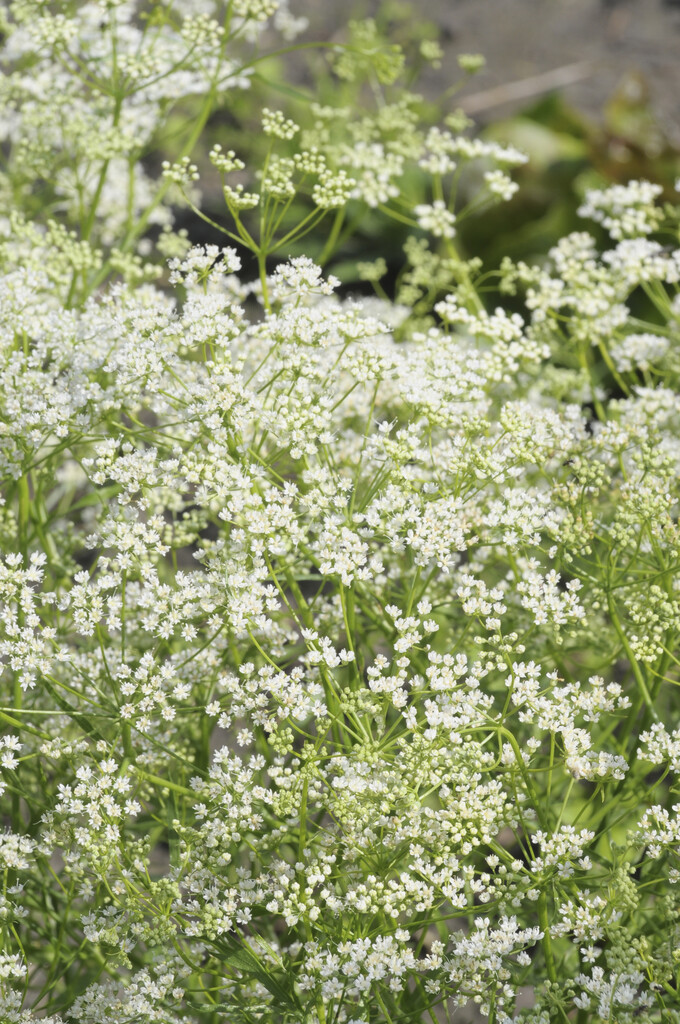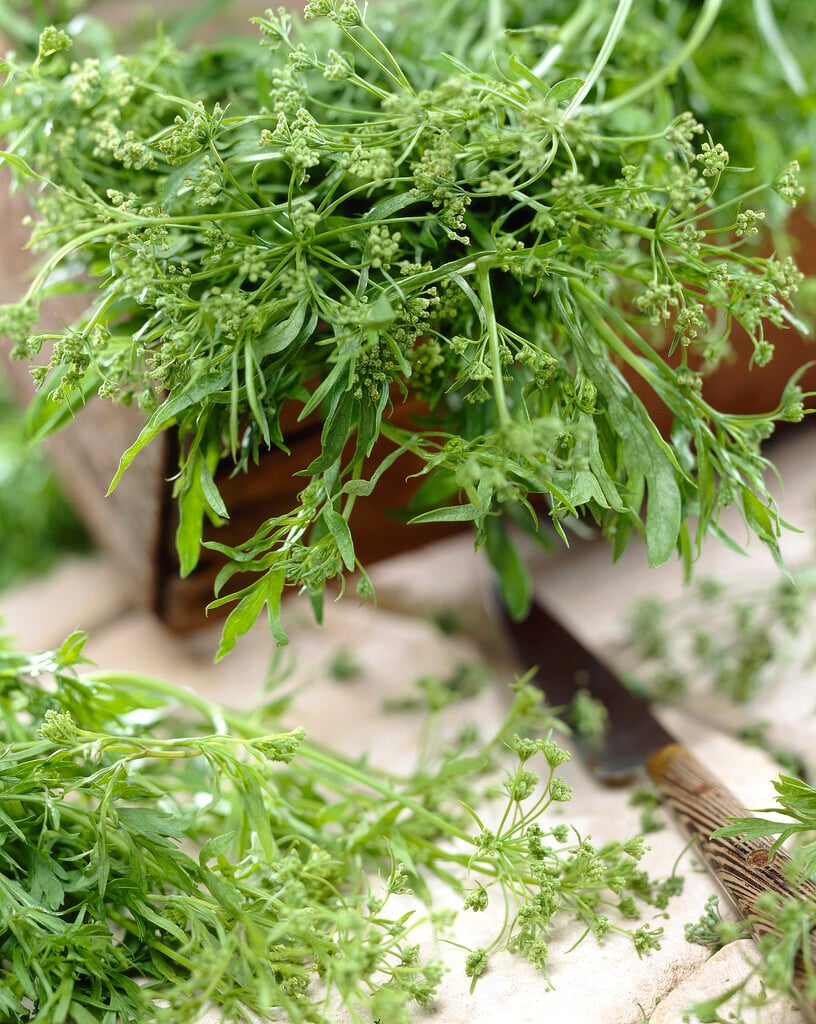Pimpinella anisum
aniseed
A bushy annual to around 60cm high, with finely divided, fern-like green leaves that are aromatic when crushed. Broad, dome-shaped heads of tiny white flowers are produced in summer, followed by long pods of seeds which can be used as a spice in cooking
Size
Ultimate height
0.5–1 metresTime to ultimate height
1 yearUltimate spread
0.1–0.5 metresGrowing conditions
Moisture
Moist but well–drained, Well–drainedpH
Acid, Alkaline, NeutralColour & scent
| Stem | Flower | Foliage | Fruit | |
| Spring | Green | |||
|---|---|---|---|---|
| Summer | White | Green | ||
| Autumn | ||||
| Winter |
Position
- Full sun
Aspect
South–facing or West–facing
Exposure
Exposed or Sheltered Hardiness
H3Botanical details
- Family
- Apiaceae
- Native to GB / Ireland
- No
- Foliage
- Deciduous
- Habit
- Bushy
- Genus
Pimpinella can be annuals, biennials or herbaceous perennials with simple or pinnately divided leaves and branched umbels of tiny flowers
- Name status
Correct
How to grow
Cultivation
Thrives in a sunny position in fertile, moist but well-drained loamy soil. Plants may need staking to keep seed pods off the ground (see staking: perennials)
Propagation
Propagate by seed, ideally sown in situ after risk of frosts has passed, as plants dislike transplanting and root disturbance. In areas where the season is not long enough for seeds to ripen, plants may be started under glass in individual pots, though it is best to sow extra to allow for losses in planting out
Suggested planting locations and garden types
- Patio and container plants
Pruning
No pruning required
Pests
Diseases
May be susceptible to powdery mildews and downy mildews
Love gardening
Sign up to receive regular gardening tips, inspiration, offers and more
View our Privacy Policy
Get involved
The Royal Horticultural Society is the UK’s leading gardening charity. We aim to enrich everyone’s life through plants, and make the UK a greener and more beautiful place.

